Related Research Articles

The U.S. Military Assistance Command, Vietnam (MACV) was a joint-service command of the United States Department of Defense, composed of forces from the United States Army, United States Navy, and United States Air Force, as well as their respective special operations forces.

The Seventh Air Force (Air Forces Korea) (7 AF) is a Numbered Air Force of the United States Pacific Air Forces (PACAF). It is headquartered at Osan Air Base, South Korea.
The Defense Prisoner of War/Missing Personnel Office (DPMO), as part of the United States Department of Defense, was an organization that reported to the Under Secretary of Defense for Policy through the Assistant Secretary of Defense. DPMO provided centralized management of prisoner of war/missing personnel (POW/MP) affairs within the Department of Defense.
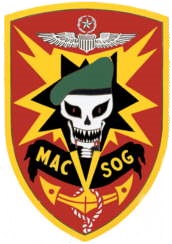
Military Assistance Command, Vietnam – Studies and Observations Group (MACV-SOG) was a highly classified, multi-service United States special operations unit which conducted covert unconventional warfare operations before and during the Vietnam War.

The United States Army, Vietnam (USARV) was a Corps-level support command of the United States Army during the Vietnam War.
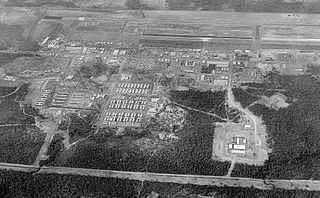
The Nakhon Phanom Royal Thai Navy Base (NKP), formerly Nakhon Phanom Royal Thai Air Force Base, is a Royal Thai Navy facility used for riverine patrols along the Mekong River. It is approximately 587 km (365 mi) northeast of Bangkok, 14.5 km (9.0 mi) west of Nakhon Phanom city in Nakhon Phanom Province in the northeastern region of Thailand, and 411 km (255 mi) from Hanoi in Vietnam. The Mekong River is NKP's border with Laos. The airfield at NKP is jointly used as a civilian airport.
Operations Enhance and Enhance Plus in the Vietnam War transferred large quantities of United States military equipment and bases to the South Vietnamese government in advance of the Paris Peace Accords which ended American involvement in the war. The two operations were conducted between May and December 1972.
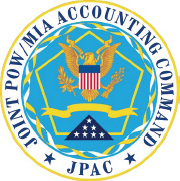
The Joint POW/MIA Accounting Command was a joint task force within the United States Department of Defense (DoD) whose mission was to account for Americans who are listed as Prisoners of War (POW), or Missing in Action (MIA), from all past wars and conflicts. It was especially visible in conjunction with the Vietnam War POW/MIA issue. The mission of the Joint POW/MIA Accounting Command was to achieve the fullest possible accounting of all Americans missing as a result of the nation's past conflicts. The motto of JPAC was "Until they are home".
The Battle of Snuol, fought in Snuol, Cambodia, was a major battle of the Vietnam War, between the Army of the Republic of Vietnam (ARVN) and the People's Army of Vietnam (PAVN) as part of Operation Toan Thang 1/71. The battle lasted from 25 to 30 May 1971.

The National League of Families of American Prisoners and Missing in Southeast Asia, commonly known as the National League of POW/MIA Families or the League, is an American 501(c)(3) humanitarian organization that is concerned with the Vietnam War POW/MIA issue. According to the group's web site, its sole purpose is "to obtain the release of all prisoners, the fullest possible accounting for the missing and repatriation of all recoverable remains of those who died serving our nation during the Vietnam War in Southeast Asia." The League's most prominent symbol is its famous flag.
The Vietnam War POW/MIA issue concerns the fate of United States servicemen who were reported as missing in action (MIA) during the Vietnam War and associated theaters of operation in Southeast Asia.

1973 in the Vietnam War began with a peace agreement, the Paris Peace Accords, signed by the United States and South Vietnam on one side of the Vietnam War and communist North Vietnam and the insurgent Viet Cong on the other. Although honored in some respects, the peace agreement was violated by both North and South Vietnam as the struggle for power and control of territory in South Vietnam continued. North Vietnam released all American prisoners of war and the United States completed its military withdrawal from South Vietnam.
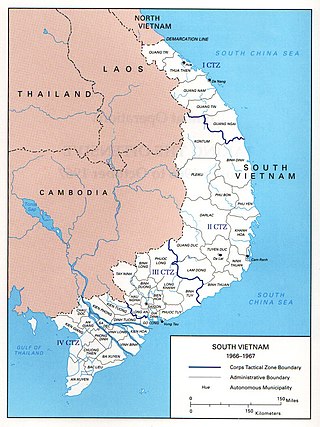
The Viet Cong (VC) insurgency expanded in South Vietnam in 1962. U.S. military personnel flew combat missions and accompanied South Vietnamese soldiers in ground operations to find and defeat the insurgents. Secrecy was the official U.S. policy concerning the extent of U.S. military involvement in South Vietnam. The commander of Military Assistance Command, Vietnam (MACV), General Paul D. Harkins, projected optimism that progress was being made in the war, but that optimism was refuted by the concerns expressed by a large number of more junior officers and civilians. Several prominent magazines, newspapers and politicians in the U.S. questioned the military strategy the U.S. was pursuing in support of the South Vietnamese government of President Ngô Đình Diệm. Diệm created the Strategic Hamlet Program as his top priority to defeat the VC. The program intended to cluster South Vietnam's rural dwellers into defended villages where they would be provided with government social services.

The U.S. Naval Forces, Vietnam was a command of the United States Navy, active during the Vietnam War, from 1 April 1966 to 29 March 1973.
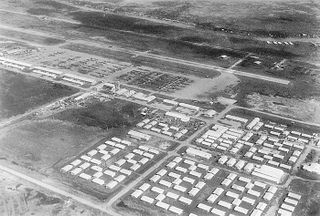
Binh Thuy Air Base was a United States Air Force (USAF), United States Navy, Republic of Vietnam Air Force (RVNAF) and Vietnam People's Air Force (VPAF) (Khong Quan Nhan Dan Viet Nam) military airfield used during the Vietnam War. It is located 7 km northwest of Cần Thơ in the Mekong Delta.

Căn cứ không quân Tuy Hòa is a former air force base in Vietnam, being closed in 1970. It was built by the United States in 1966 and was used by the United States Air Force (USAF) during the Vietnam War in the II Corps Tactical Zone of South Vietnam. It was captured by the People's Army of Vietnam in April 1975 and was abandoned for several decades. Today, the site has been redeveloped as Cảng Hàng Không Tuy Hòa
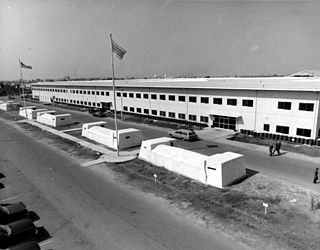
The Defense Attaché Office, Saigon was a joint-service command and military attaché branch of the United States Department of Defense (DOD) under the control of United States Support Activities Group (USSAG). It assumed all DOD responsibilities in South Vietnam following the disestablishment of Military Assistance Command, Vietnam (MACV) in March 1973. The DAO was responsible for administering military assistance and support to the South Vietnamese armed forces, the gathering and distribution of military intelligence and the performance of normal Defense Attaché functions. The DAO remained in existence until August 1975.

The Joint General Staff (JGS) was a body of senior uniformed leaders in the South Vietnamese military which advised the Ministry of National Defence and the President of South Vietnam.
The Joint Personnel Recovery Center was a joint task force within Military Assistance Command, Vietnam (MACV) active from 1966 to 1973, whose mission was to account for United States, South Vietnamese and Free World Military Assistance Forces (FWMAF) personnel listed as Prisoners of War (POW) or Missing in Action (MIA) in the Vietnam War.
References
- ↑ "JPRC Fact Sheet" (PDF). Military Assistance Command, Vietnam. Retrieved 29 December 2023.
 This article incorporates text from this source, which is in the public domain .
This article incorporates text from this source, which is in the public domain . - ↑ Arnold R. Isaacs (1 March 1998). "Mud in the data stream". The New York Times.
- 1 2 3 4 5 "MACV Command History January 1972 - March 1973 Volume II" (PDF). Military Assistance Command, Vietnam. Retrieved 29 December 2023.
 This article incorporates text from this source, which is in the public domain .
This article incorporates text from this source, which is in the public domain . - 1 2 3 Melson, Charles (1991). U.S. Marines In Vietnam: The War That Would Not End, 1971–1973. History and Museums Division, Headquarters, U.S. Marine Corps. p. 234. ISBN 9781482384055.
 This article incorporates text from this source, which is in the public domain .
This article incorporates text from this source, which is in the public domain . - ↑ Le Gro, William (1985). Vietnam from Cease Fire to Capitulation (PDF). United States Army Center of Military History. p. 18. ISBN 9781410225429.
 This article incorporates text from this source, which is in the public domain .
This article incorporates text from this source, which is in the public domain . - ↑ Dunham, Maj. George R.; Quinlan, Col. David A. (1990). U.S. Marines in Vietnam: The Bitter End, 1973–1975 (Marine Corps Vietnam Operational Histories Series) (PDF). Washington D.C.: History & Museums Division; Headquarters, U.S. Marine Corps. pp. 6–7. ISBN 978-0-16-026455-9.
 This article incorporates text from this source, which is in the public domain .
This article incorporates text from this source, which is in the public domain . - ↑ "Vietnam War Accounting". Defense POW/MIA Accounting Agency. Retrieved 11 October 2016.
- ↑ "CINCPAC Command History 1975" (PDF). Commander in Chief Pacific. 7 October 1976. Retrieved 29 December 2023.
 This article incorporates text from this source, which is in the public domain .
This article incorporates text from this source, which is in the public domain .